You have the right to work, but never to the fruit of work. BG 2:47
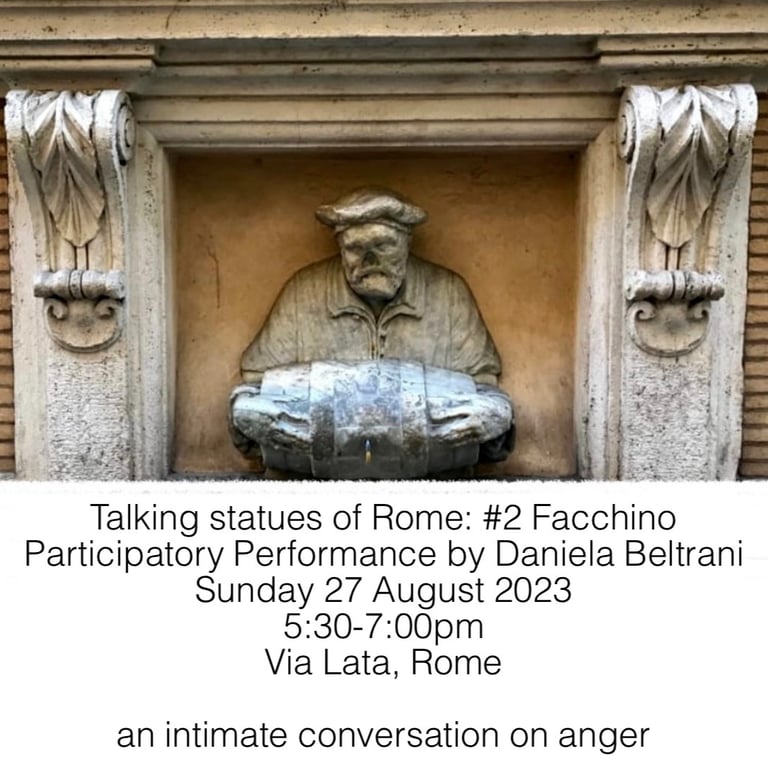
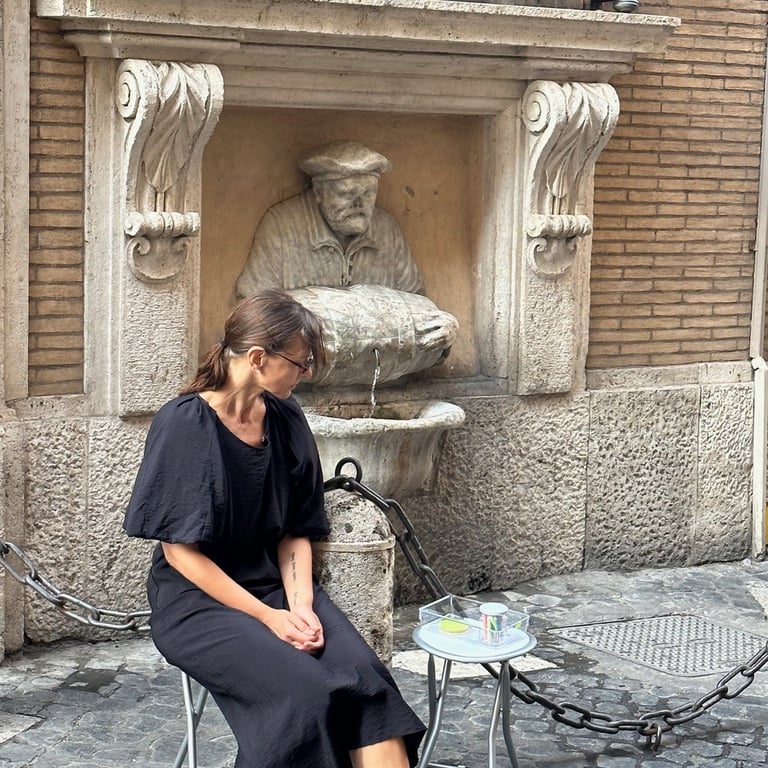
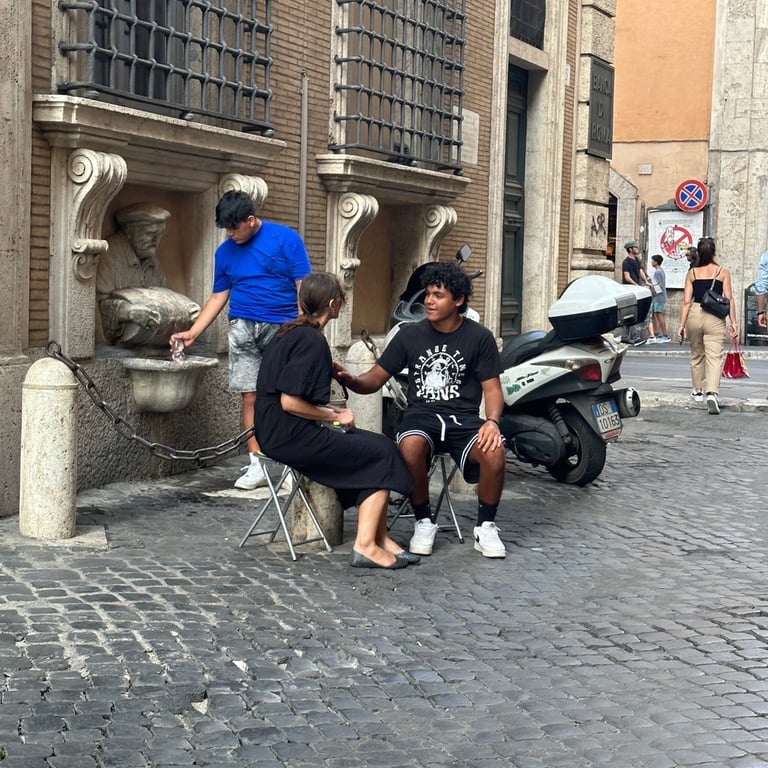
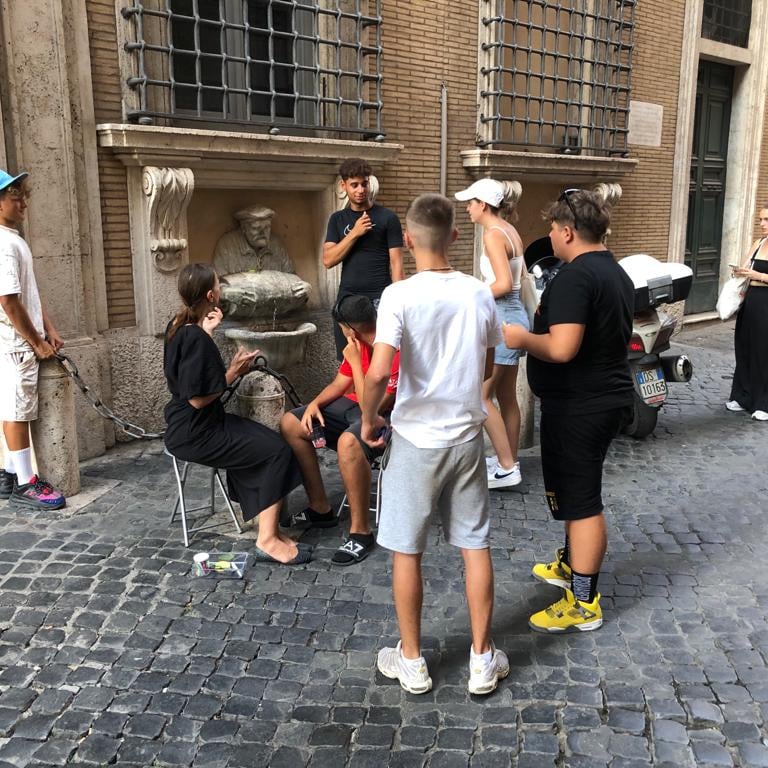
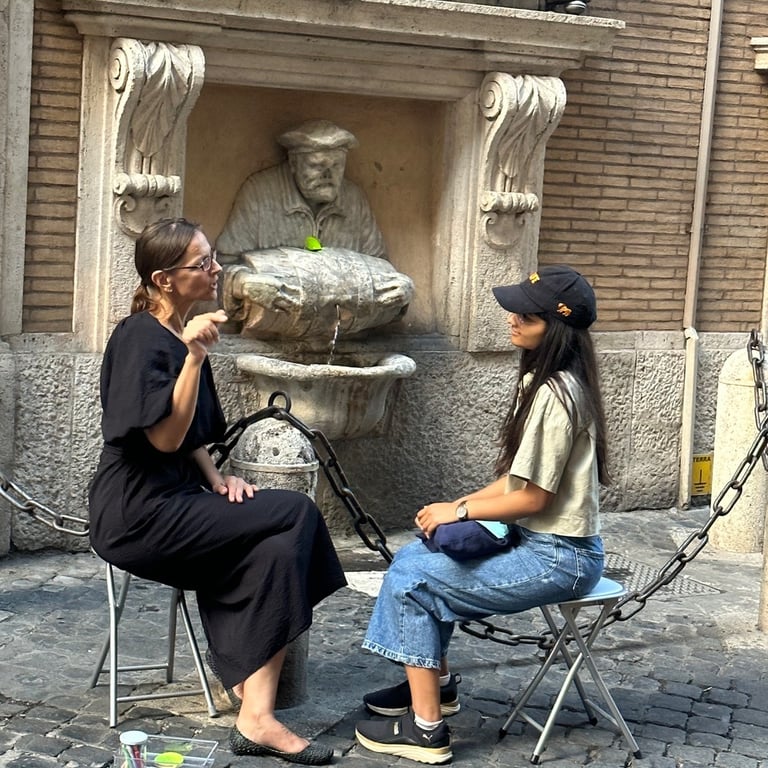
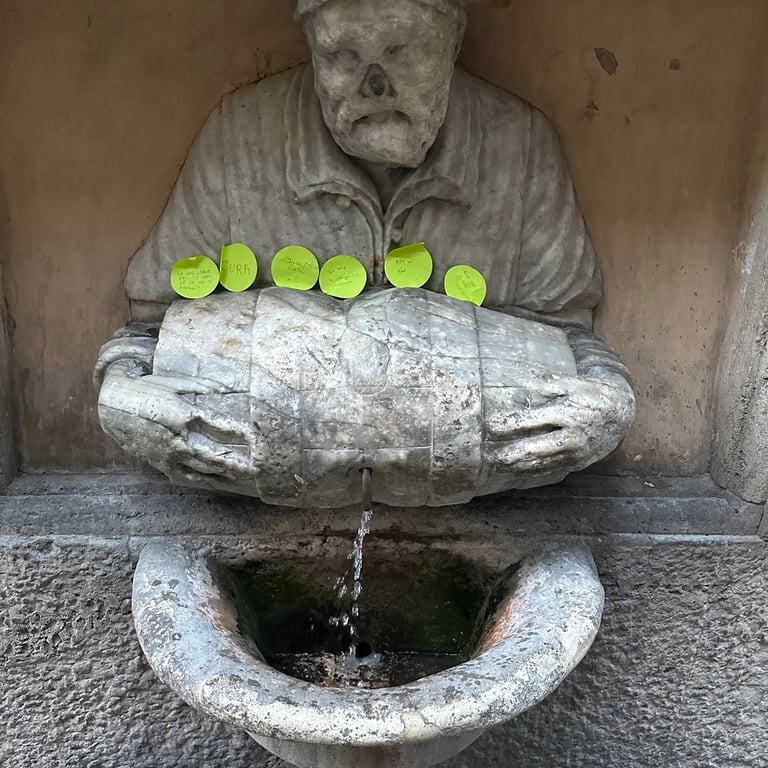
Talking statues of Rome #2 Facchino (2023), PAR, Via Lata, Rome IT
Over the past 500 years, the genuine and vernacular spirit of Rome has spoken in anonymity through six statues scattered throughout the historic center, collectively known as the Congress of Wits.
Weaving together contemporary art, archaeology, architecture, and history, I conceived and presented the series Talking Statues of Rome during the summer of 2023. Each statue served me as a muse, suggesting a distinct theme that I then proposed to each participant. I invited each sitter to share their personal story and to leave a few words behind, transforming these encounters into an ongoing dialogue woven into the very fabric of the city.
Facchino is not only a statue but also a functioning fountain, quietly nestled just off the bustling Via del Corso, its original home before being relocated to nearby Via Lata in the 19th century. The statue depicts an acquaiolo, or water-carrier - a figure once integral to Roman daily life, responsible for delivering fresh water throughout the city at a time when the ancient aqueducts had fallen into disrepair. Commissioned around 1580 by the Corporazione degli Acquaioli and sculpted by Jacopo del Conte, Facchino wears the distinct garb of his trade: a cap, sleeved shirt, and, most notably, the heavy barrel from which water still flows today.
For this performance, I chose the theme of anger - a reflection rooted in the peculiar fate of the statue itself. Legend holds that the facial features of Facchino were seen as bearing an uncanny resemblance to Martin Luther, a controversial figure in Catholic Rome. As a result, the statue became a target of stone-throwing and vandalism by those who despised Luther, leaving its face noticeably damaged even now. This misidentification, charged with religious and cultural hostility, transformed the statue from a simple celebration of a lost urban trade into a silent site of projection for collective emotions.
By inviting anger as the theme, I aimed to channel not only the statue’s turbulent history but also the fuller spectrum of human experience it embodies—from the toil and service of the water-carriers to the violence wrought by misunderstanding and intolerance. Facchino, both wounded and enduring, thus continues to tell a multifaceted Roman story: of necessity and resilience, conflict and survival, quietly flowing beneath the surface of the city’s lively streets.
Photo by Daniele Ottavi